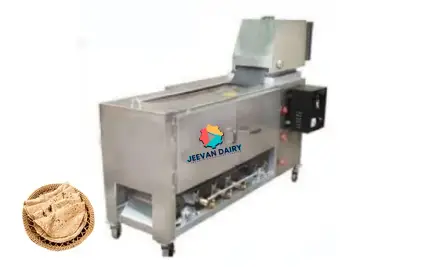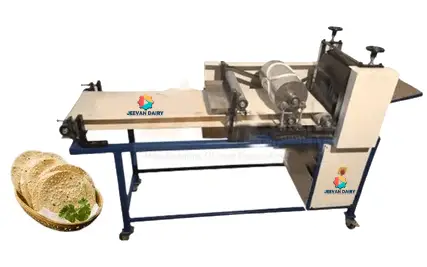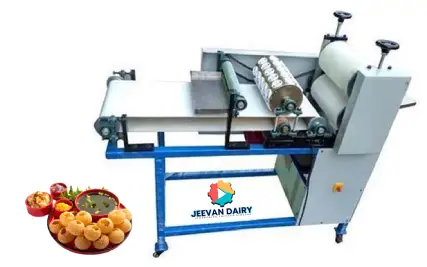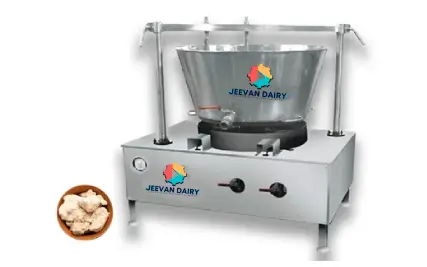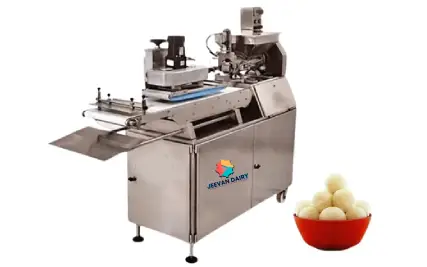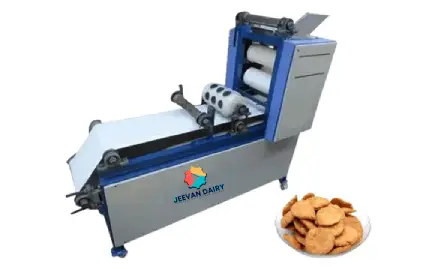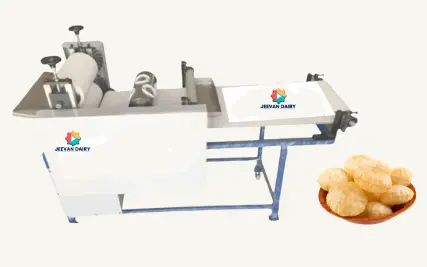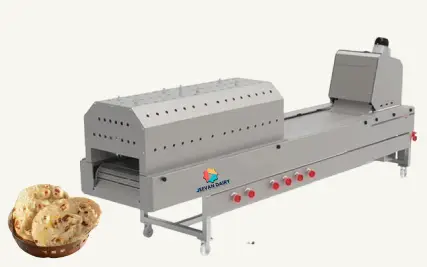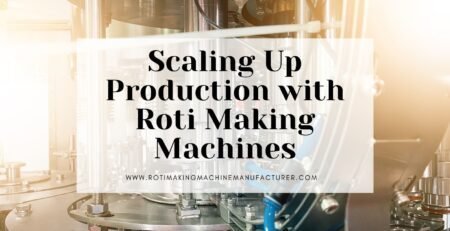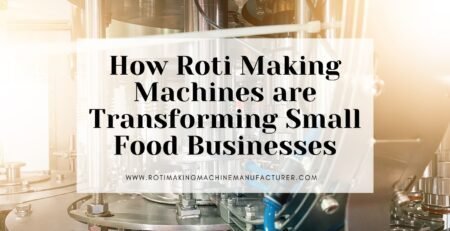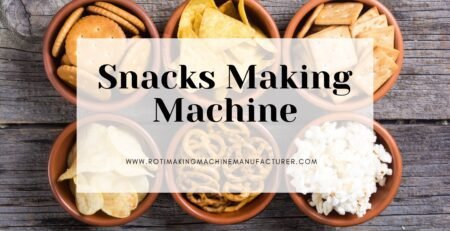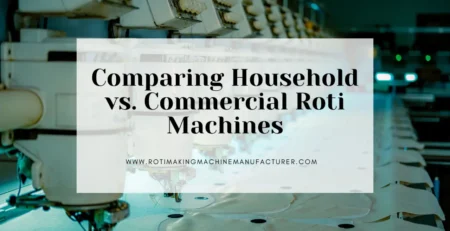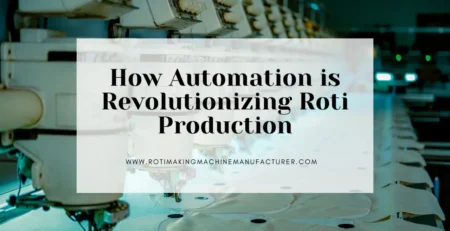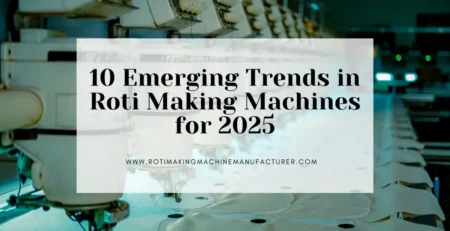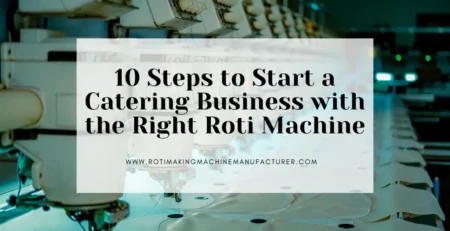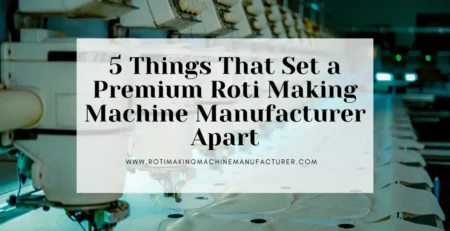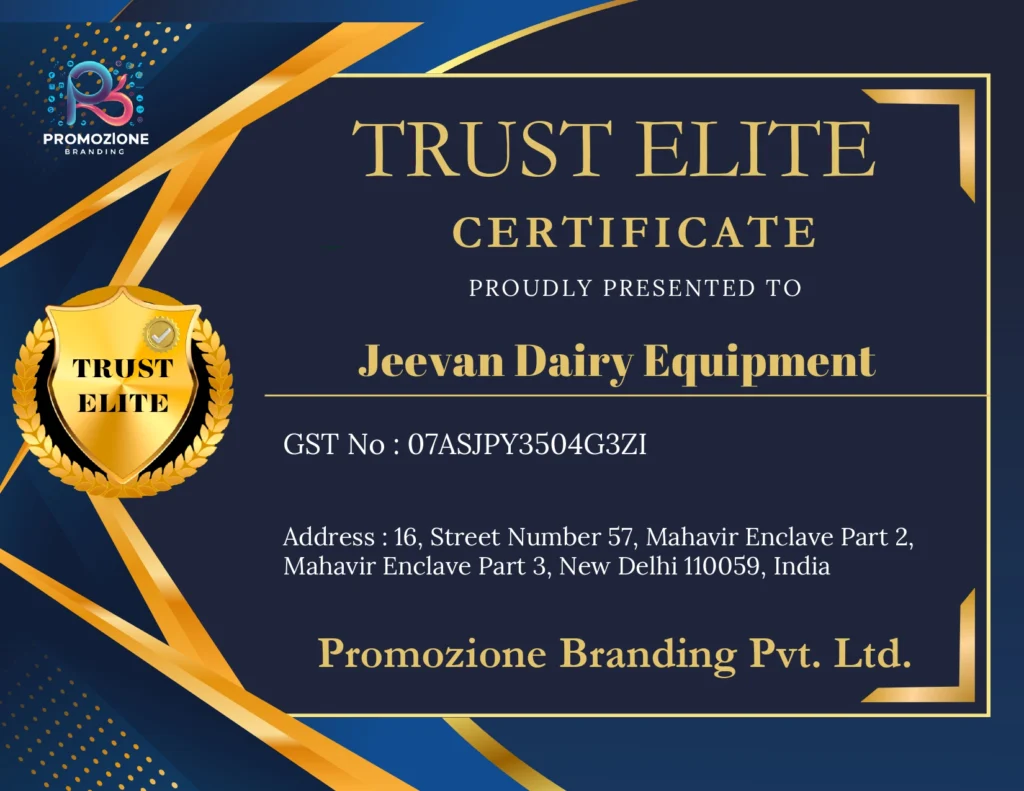Comparing Fully Automatic vs Semi-Automatic Roti Makers
Introduction — A Modern Revolution in Roti Making
The humble roti is more than just food in India and other parts of the world; it is a daily necessity. It can be difficult to prepare soft, round, and fresh rotis in large quantities, whether in a busy restaurant, school canteen, or cloud kitchen. In the past, this procedure required a large number of workers and long workdays. However, things have drastically changed as a result of the development of technology.
The roti-making machine manufacturer is an example of an innovation that combines consistency, hygiene, and automation. Depending on their size, requirements, and financial constraints, businesses can now select between fully automatic and semi-automatic roti makers.
This comprehensive guide helps industrial kitchens, restaurant owners, and food entrepreneurs choose the best machine for their needs by comparing the two types. Through the perspective of Jeevan Dairy Industry, one of India’s most reputable manufacturers of roti-making machines, we will examine their design, capacity, costs, advantages, and upkeep.
Understanding the Basics — What Are Roti Making Machines?
Let’s first examine the functions of a roti-making machine before moving on to the comparison.
The three crucial steps in roti preparation—pressing, flattening, and roasting the dough—are automated by a roti-making machine. While some machines concentrate solely on cooking, others also have systems for mixing dough and portioning.
Simply put, compared to manual preparation, these machines help produce rotis that are uniform, hygienic, and perfectly cooked much more quickly.
These machines are now generally divided into two groups based on the degree of automation:
- Semi-Automatic Roti Makers
- Fully Automatic Roti Makers
Each serves a different purpose and business size.
Semi-Automatic Roti Makers — Balance Between Control and Automation
Between manual and fully automated processes, a semi-automatic roti-making machine fills the gap. Although it handles the majority of labor-intensive and repetitive tasks, like pressing and roasting, it still needs human assistance at certain points, like feeding dough, placing balls, and removing completed rotis.
Key Features of Semi-Automatic Roti Makers
- Manual Dough Feeding: Workers feed the machine balls of pre-mixed dough.
- Automatic Cooking and Pressing: The machine cooks the dough evenly on both sides and automatically presses it into round shapes.
- Compact Design: Perfect for restaurants and kitchens with limited space.
- Reduced Power Consumption: Uses less energy than models that are completely automated.
- Reasonably priced: Economical for small and medium-sized enterprises.
Advantages
- Economical Investment: Semi-automatic roti makers are inexpensive, which makes them ideal for startups or small businesses.
- Manual Control: To achieve the appropriate softness or browning, operators can modify the pressing force, temperature, and timing.
- Simple Maintenance: Complexity and maintenance expenses are reduced when there are fewer parts.
- Energy Saving: Lowers operating costs by using less power.
- Flexibility: With a few small adjustments, it can be used for a variety of flatbreads, such as chapati, paratha, or puri.
Limitations
- Requires at least one or two workers to handle feeding and collection.
- Output is moderate, typically 400–600 rotis per hour, depending on the model.
- Some variation in thickness or shape may occur due to manual handling.
Canteens, dhabas, catering services, tiffin providers, and mid-sized restaurants that require quality control and reasonable automation without significant financial outlays are the ideal candidates for semi-automatic machines.
Fully Automatic Roti Makers — Hands-Free, High-Speed Production
The next step in kitchen automation is a completely automated roti-making machine. It is made to do everything without human assistance, from feeding the dough to roasting it. After it is set, the machine steadily and continuously makes rotis.
Key Features of Fully Automatic Roti Makers
- Dough mixing, ball cutting, flattening, and roasting units are all part of the integrated system.
- Continuous Operation: Able to make rotis all day long with little oversight.
- High Output: Depending on the model and size, it can make 800–2000 rotis per hour.
- Consistent Quality: The thickness, diameter, and texture of each roti are consistent.
- Digital Controls: PLCs, or programmable logic controllers, are used in machines to precisely regulate temperature and timing.
Advantages
- Maximum Efficiency: Ideal for industrial canteens, large kitchens, or food supply chains that need to make thousands of rotis every day.
- Labor savings: One operator can supervise the entire process, reducing the need for manual labor.
- High Hygiene Levels: Safe, hygienic food production is ensured by minimal human contact.
- Consistent Product Quality: Every batch is guaranteed to be consistent thanks to automated settings.
- Faster ROI: For expanding companies, higher production translates into faster returns on investment.
Limitations
- Greater Initial Cost: More costly because of technology and integrated systems.
- Energy Consumption: Because it runs continuously, it uses more power.
- More floor space is needed than with semi-automatic models.
- Complex Maintenance: More systems and moving parts need to be serviced by professionals.
Fully automatic roti makers are ideal for industrial kitchens, hotels, hospitals, schools, and mass catering services that prioritize volume, hygiene, and consistency.
Performance Comparison — Quality, Speed, and Reliability
When comparing these two machines in real-world settings, the differences become clear in terms of performance:
Speed
When it comes to speed, fully automatic machines rule. Compared to semi-automatic ones, they can make up to three times as many rotis in an hour. That speed guarantees prompt service and efficient operations for busy kitchens.
Consistency
Every roti is guaranteed to be the same size, softness, and cooking time thanks to a fully automated machine that has digitally controlled heat and rollers. Although there may be minor variations with semi-automatic versions that rely partially on manual feeding, they are still superior to fully manual preparation.
Ease of Use
Semi-automatic machines are easier to run and maintain, but both types are made to be user-friendly. Manufacturers such as Jeevan Dairy Industry may offer brief training sessions for fully automated machines.
Durability
Both machines have a long lifespan when properly maintained. While semi-automatic machines are more resilient and less susceptible to small mishandling, fully automatic systems, being more complex, need planned maintenance.
Return on Investment (ROI)
Fully automated machines are more expensive at first, but for large-scale operations, their increased productivity guarantees a quicker return on investment. Due to their low startup and operating costs, semi-automatic models provide small businesses with a higher return on investment.
Cost and ROI Analysis
Semi-automatic roti makers are much less expensive, which makes them ideal for business owners on a tight budget. A semi-automatic model, for instance, may be 40–60% less expensive than a fully automatic one.
However, in high-demand settings, a fully automated machine might recoup its cost more quickly when labor savings and production capacity are taken into account.
For instance:
- Semi-automatic model: Ideal for producing up to 600 rotis/hour, with lower investment but continued labour cost.
- Fully automatic model: Ideal for producing over 1000 rotis/hour, with a higher initial cost but massive labour savings and greater output.
As a reputable manufacturer of roti-making machines, Jeevan Dairy Industry frequently provides cost-benefit analyses to its customers based on their kitchen’s size, demand, and workforce availability.
Maintenance and Operational Differences
Maintenance plays a crucial role in ensuring machine longevity and performance.
- Semi-Automatic Machines: Require simple daily cleaning, lubrication, and occasional replacement of rollers or heating elements.
- Fully Automatic Machines: Require more frequent professional servicing, especially for electronic components and conveyor belts.
To guarantee seamless operation and reduce downtime, Jeevan Dairy Industry offers operator training, user manuals, and complete maintenance support.
Environmental and Energy Impact
When it comes to sustainability, both machines can be eco-friendly if maintained properly.
- Semi-Automatic Machines: Consume less electricity and gas, making them energy-efficient for smaller kitchens.
- Fully Automatic Machines: Though they consume more power, modern designs from Jeevan Dairy Industry use advanced heating systems that optimize fuel usage and minimize waste.
By guaranteeing consistent dough size and ideal cooking, both devices greatly reduce food waste and are consistent with environmentally friendly business practices.
Social and Workplace Impact
Working conditions in Indian food businesses have improved since the introduction of roti-making machines. Workers are no longer subjected to repetitive strain and long hours in the heat.
Semi-automatic models keep workers involved in the process while reducing physical strain.
Fully automated models further minimize manual labor, allowing employees to focus on other management or kitchen duties.
This change improves productivity while promoting improved employee satisfaction, workplace safety, and hygiene—all of which are top priorities for businesses like Jeevan Dairy Industry.
Choosing the Right Model for Your Business
Here’s how to decide between a fully automatic and a semi-automatic roti maker based on your situation:
Choose a Semi-Automatic Roti Maker if:
- You run a small to mid-sized restaurant, dhaba, or tiffin service.
- You have limited space and manpower.
- You want affordable automation with some manual control.
- Your daily requirement is below 800 rotis.
Choose a Fully Automatic Roti Maker if:
- You run a sizable hotel, industrial kitchen, or canteen.
- You want the highest level of consistency and hygiene.
- Your goal is to produce more than 1000 rotis every day.
- You’re prepared for a larger investment with a quicker return on investment.
Both types serve different business goals, and the right choice depends on balancing your output needs, budget, and kitchen size.
Why Choose Jeevan Dairy Industry as Your Roti-Making Machine Manufacturer
Selecting the appropriate manufacturer is essential when investing in any food automation equipment. As one of India’s top manufacturers of roti-making machines, Jeevan Dairy Industry has gained credibility for its dependability, creativity, and customer support.
Here’s why businesses choose Jeevan Dairy Industry:
- Custom Solutions: Equipment made to fit the dimensions, capacity, and output requirements of your kitchen.
- Sturdy Construction: All of the machines are long-lasting and constructed from food-grade stainless steel.
- Energy Efficiency: Lower operating costs are guaranteed by cutting-edge heating and power-saving technologies.
- Complete Support: Everything is done expertly, from installation to post-purchase maintenance.
- Competitive pricing that doesn’t sacrifice performance or quality is known as affordable pricing.
- Training and Guidance: To guarantee seamless operations, on-site training and maintenance assistance are provided.
The company’s machines are already helping small and large kitchens achieve new levels of efficiency, hygiene, and profitability.
Conclusion
Deciding to buy a fully or semi-automated roti-making machine is more than just a purchase; it’s a strategic move that can determine the effectiveness, caliber, and future course of your food company. Understanding the distinct benefits of each machine type is crucial to making an informed decision that fits your operational objectives, financial constraints, and client expectations.
Large-scale production is the goal of a completely automated roti maker. With little assistance from humans, it manages every step of the process, including feeding the dough, pressing it, rolling it, baking it, and finally delivering the finished product. This degree of automation guarantees unparalleled uniformity in terms of size, texture, and flavor, which makes it a perfect fit for mass catering services, hotels, hospitals, and industrial kitchens. You can drastically cut down on labor dependency, optimize workflow, and effectively handle high-volume demands with a fully automated machine. Although the initial outlay may be greater, the long-term advantages—such as lower labor expenses, less waste, and a quicker return on investment—make it a sensible and progressive option for companies looking to grow.
On the other hand, a semi-automatic roti maker offers an excellent balance between automation and manual control. It performs most of the labor-intensive tasks, such as pressing and cooking, while still allowing operators to handle dough feeding and output collection. This flexibility is especially beneficial for small to medium-sized food businesses like tiffin services, small restaurants, or school canteens. Semi-automatic machines are more budget-friendly, energy-efficient, and compact, allowing business owners to invest in quality automation without straining finances. Additionally, they retain the ability to adjust thickness, taste, and texture manually, preserving the traditional flavor of hand-made rotis.

